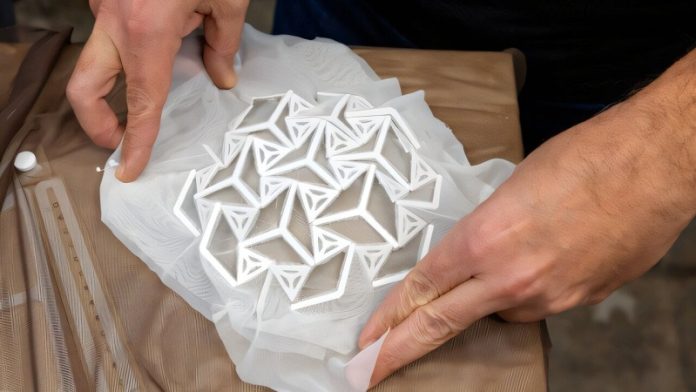
Most solar panels are rigid, flat, and not very attractive. They need to be installed on flat surfaces, limiting their use.
But what if solar panels were flexible, lightweight, and could wrap around different shapes while also looking beautiful? That’s the idea behind HelioSkin, a new bio-inspired solar technology being developed by a team at Cornell University.
HelioSkin is a project led by Jenny Sabin, a professor of architecture, in collaboration with physicist Itai Cohen and plant biologist Adrienne Roeder.
Their goal is to create solar panels that move and adjust like plants do to absorb more sunlight, making solar power more efficient and widely used.
The idea comes from plants, which naturally turn toward the sun to maximize their energy intake. The research team is studying Arabidopsis, a small flowering plant, to understand how its cells grow and bend toward sunlight. These biological principles are being translated into solar panel design, creating materials that can move and change shape to capture more light.
By combining advanced design, 3D printing, and smart materials, HelioSkin panels can be customized to improve both efficiency and appearance.
Unlike traditional solar panels, which are often bulky and plain, these new panels could blend beautifully into urban spaces, making solar energy more appealing for homeowners and businesses.
The project is now in a three-year pilot phase, starting with small solar canopies for backyards. These canopies will provide power for outdoor appliances while demonstrating how the flexible solar skin works.
The team’s ultimate goal is to scale up the technology for use in stadiums, skyscrapers, and large public spaces.
Bringing this idea to life requires more than just scientific innovation. The team is working with industry partners, including E Ink and Rainier Industries, to integrate solar technology into lightweight, stretchable fabrics. SunFlex, another partner, is helping refine the wiring and panel design.
One surprising discovery from market research was that businesses might use HelioSkin not just for energy but also for advertising. The team is working with E Ink to develop solar panels with color-changing displays that could be used on retail buildings or stadiums, turning them into solar-powered billboards.
By using cost-effective manufacturing techniques, such as roll-to-roll printing, HelioSkin can be produced affordably at a large scale. The panels are designed to be flexible, like fabric, so they can wrap around curved structures without creasing.
The project is part of a growing movement to make solar energy more accessible and attractive. HelioSkin’s innovative design could encourage more people and businesses to adopt solar technology, helping to reduce greenhouse gas emissions from buildings.
With its combination of science, engineering, and design, HelioSkin represents a fresh, exciting approach to solar energy—one that could transform the way we think about solar panels in the future.



